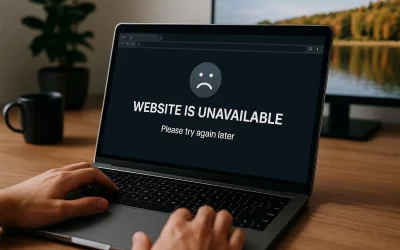A lot of people have a lot riding on their emails, you’re probably not different. You can run an entire business solely through emails, if you’re doing this and your emails become inaccessible or unavailable over an extended period of time you could be in a spot of trouble. Here are some steps you can take to ensure your emails are consistent and reliable.
The first may seem like the most obvious, but it is one of the most important and that is your password. It needs to be complex enough so that someone won’t easily guess it and you really need to make sure it isn’t on this list. A mixture of numbers, letters (capital and lowercase) and symbols is recommended to provide the most secure password. If you know you have trouble remembering passwords, then you need to be sure it’s written down securely somewhere. You also need to be absolutely certain that all of your devices with active email accounts have the most current password so as to avoid any issues with our server firewalls.
Another thing you need to be aware of is your mailbox’s storage capacity. As soon as your mailbox is full it will start bouncing incoming emails and blocking any outgoing emails as well. Meaning you won’t receive or be able to send. Anything you do receive while your mailbox is full cannot be recovered either and will need to be resent. You can manage your mailbox storage from the following address -yourdomain/webmail-. From there you can login using your email address and password, in the top right you should see something like x/100mb. Click on that to manage your storage.
The last thing is in regard to deliverability, so you shouldn’t have any trouble sending emails to anyone and will also help you keep out spam at the same time. Mail authentication, AKA DKIM, DMARC and SPF records inserted into your domains DNS. SPF looks at any of your incoming mail and verifies it is coming from a legitimate source. If it cannot verify the source, it will reject the mail before it ever enters your mailbox. DKIM is for outgoing, when you send an email a DKIM signature is attached to it, this tells any receiving mail server that your email is legitimate and is safe to allow through to be delivered. DMARC basically just ensures that SPF and DKIM records are being properly authenticated and that any fraudulent emails are blocked. Once all three are installed your emails will almost always successfully deliver and incoming spam will be filtered out effectively. You can check if your domain has SPF, DKIM and DMARC here
If you stick to these three rules you will 100% notice the difference than if you were acting otherwise. If you have any questions about your emails please don’t be afraid to call (1300 761 930) or email us (support@hosting-australia.com).
If you had any trouble understanding any of the terms in this article please check out our glossary.







